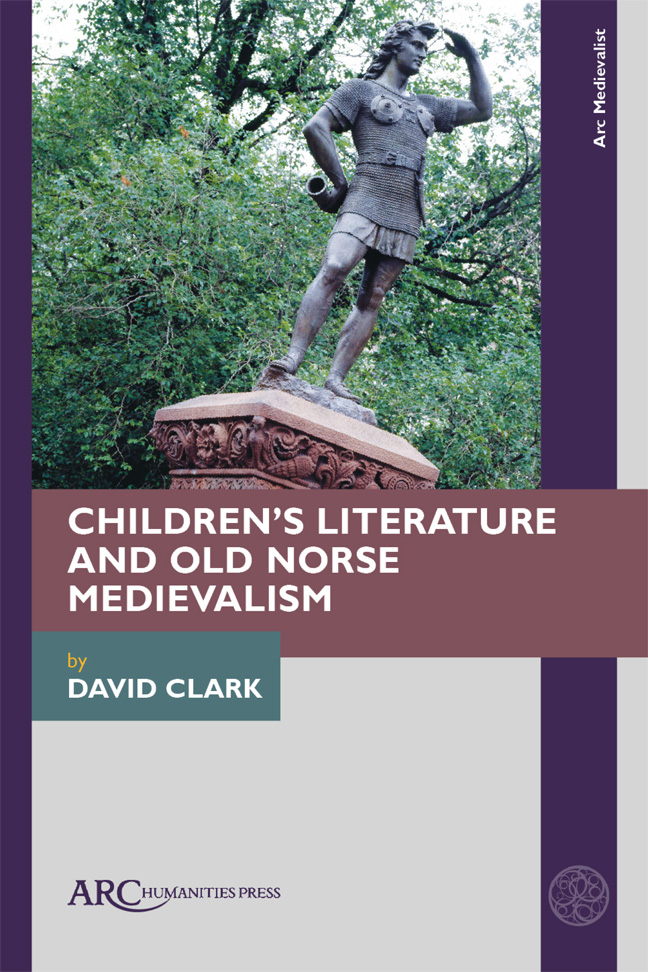Book contents
- Frontmatter
- Contents
- Acknowledgements
- Dedication
- Introduction: The End
- 1 Age-Related Categories
- 2 Generic Categories
- 3 Transformational Fantasy
- 4 Horned Helmets and Comic Anachronism
- 5 Viking Reputation
- 6 Runes and Magic
- 7 The Power of Story
- 8 Race and Ethnicity
- 9 Heroism
- 10 Viking Masculinity
- 11 Viking Femininity
- 12 Viking Sex and Gender
- 13 Bowdlerization
- 14 Sexuality
- 15 Ecological Threat
- 16 Norse Medievalism in Alan Early's Father of Lies Trilogy
- 17 Avoiding the End of Days: K. L. Armstrong and M. A. Marr's Blackwell Pages
- 18 Rick Riordan's Magnus Chase Series and Norse Medievalism
- Conclusion
- Select Bibliography of Frequently Cited Works
- Index
4 - Horned Helmets and Comic Anachronism
Published online by Cambridge University Press: 17 February 2024
- Frontmatter
- Contents
- Acknowledgements
- Dedication
- Introduction: The End
- 1 Age-Related Categories
- 2 Generic Categories
- 3 Transformational Fantasy
- 4 Horned Helmets and Comic Anachronism
- 5 Viking Reputation
- 6 Runes and Magic
- 7 The Power of Story
- 8 Race and Ethnicity
- 9 Heroism
- 10 Viking Masculinity
- 11 Viking Femininity
- 12 Viking Sex and Gender
- 13 Bowdlerization
- 14 Sexuality
- 15 Ecological Threat
- 16 Norse Medievalism in Alan Early's Father of Lies Trilogy
- 17 Avoiding the End of Days: K. L. Armstrong and M. A. Marr's Blackwell Pages
- 18 Rick Riordan's Magnus Chase Series and Norse Medievalism
- Conclusion
- Select Bibliography of Frequently Cited Works
- Index
Summary
ONE OF THE most popular ideas associated with the Vikings—and so the theme with which I start—is that they wore horned helmets, and they often feature in illustrations for books even when the narrative does not mention them. Though the warriors of some early cultures wore such helmets, there is no evidence that the Vikings did. Rather the association stems from a costume design for Wagner's Ring Cycle in the nineteenth-century, which popularized the image. The ways in which medievalist authors use this motif, whether straightforwardly or in order to debunk it, represent wider attitudes to the uses of anachronism.
Anachronistic values feature alongside horned helmets in Lyn Halvorsen's Anton the Brave Viking (2011). The self-published story for younger children explores the concerns of a small Viking boy who wants to be brave and to grow taller, and concludes with an unexpectedly mild moral: “You have kindness in your heart, and THAT is the most important part of being a Viking.” Some Norwegian vocabulary is provided at the end of the book, but the book was followed up by Anton the Brave Viking and the Scaredy Cat, Anton and the King of Crumbly Castle, and Anton the Viking and The Waffle Mountain—the Viking here functions as stand-in for the contemporary adventures of Halvorsen's target audience.
Magnus Bledwell's Sons of Thor: Dane the Defiant (2009) flaunts both cheerful anachronistic references to contemporary phenomena such as merchandizing and values expressed in modern terms. The villain Prince Thidrek's “cult of personality” is aided by “official…figurines” which come free with a meal, like a McDonalds Happy Meal (242); the teenage protagonist Dane's father tells him that what “defines a man isn't the sword he carries in his hand; it's the beliefs he carries in his heart” (11). The values of modern romance are foregrounded in Dane's conquest of Thidrek, seen as “an epic battle between right and wrong, between he who saw love as the source of human strength and he who saw it as the source of human weakness.”
- Type
- Chapter
- Information
- Children's Literature and Old Norse Medievalism , pp. 47 - 52Publisher: Amsterdam University PressPrint publication year: 2023

